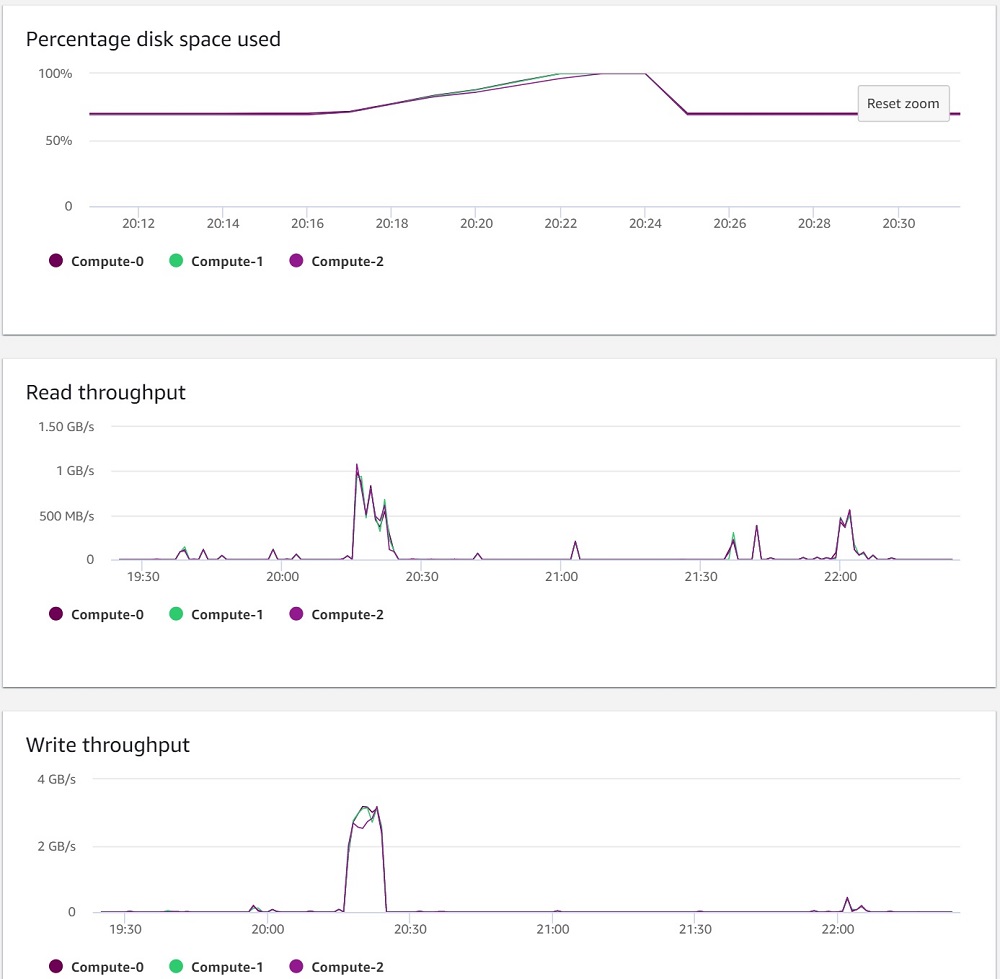

"ClusterIdentifier": "cc-prod-data-cluster",Ġ3 Repeat step no. "ParameterGroupName": "default.redshift-1.0", 4 – 6 to increase the storage capacity for other Amazon Redshift clusters with high disk space usage, provisioned in the current region.Ġ8 Change the AWS region from the navigation bar and repeat the remediation/resolution process for other regions. During this time, you can only run queries that read from the cluster database and you cannot run any queries that write to the database (including read-write queries).Ġ7 Repeat steps no. IMPORTANT: When you start the resize operation, the Redshift service puts the existing cluster into read-only mode until the resize is complete. The Cluster Status should change now to resizing.

Click Resize to apply the changes and resize the selected Redshift cluster.Increase the number of nodes available within Number of nodes box.Select Multi Node from the Cluster type dropdown list to configure the selected cluster into a multi-node cluster.

1 - 5 to perform the entire audit process for other regions.Ġ4 Choose the Redshift cluster that you want to resize (see Audit section part I to identify the right resource), then click on its identifier/name link, listed in the Cluster column.Ġ5 On the selected cluster configuration page, click the Cluster dropdown button from the dashboard top menu and select Resize.Ġ6 Within Resize Cluster configuration window, perform the following: 3 and 4 to check the disk space usage details for other Redshift clusters provisioned in the current region.Ġ6 Change the AWS region by updating the -region command parameter value and repeat steps no. If the amount of disk space used is greater than or equal to 90%, the selected AWS Redshift cluster has insufficient disk space to perform optimally.Ġ5 Repeat step no. 4 –6 to verify the disk space usage details for other Redshift clusters provisioned in the current region.Ġ8 Change the AWS region from the navigation bar and repeat the audit process for other regions. If the amount of disk space used is greater than or equal to 90%, the selected Amazon Redshift cluster has insufficient disk space to perform optimally, therefore scaling the cluster to add more storage space is highly recommended.Ġ7 Repeat steps no. Once the monitoring data is loaded, verify the percent of the disk space used currently for the selected cluster.


 0 kommentar(er)
0 kommentar(er)
